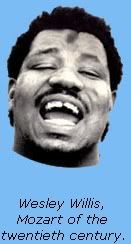Heaven on Earth
It's been almost two weeks since Benedict released his motu proprio, Summorum Pontificum, in which he granted greater freedom to the use of the liturgy according to the traditional Roman Rite, a.k.a. the Tridentine Mass, a.k.a. the Traditional Latin Mass, a.k.a. the Mass of John XXIII (see my previous post here). If you've followed any mainstream news coverage of the event, one of the criticisms of the traditional liturgy that is cited most often is the use of a prayer (offered one time, during one liturgy per annum) that is perceived to be anti-semitic.
It's a ridiculous notion, especially considering just how much the traditional rite resembles a pre-rabinnic Jewish sacrifice. One of all my all time favorite modern theologians, Scott Hahn, also wrote one of my all time favorite books, The Lamb's Supper. In it, he reminds us of the ancient (and now, nearly forgotten) understanding of the mass as a reflection of the heavenly liturgy, which - as St. John's Apocalypse reveals to us - is a sort of mega-Passover feast, conducted by Christ himself, who is both the Priest King AND the sacrificial lamb. This is why the Eastern and Orthodox Catholics still refer to the mass as the Divine Liturgy. How's all that for Jewish symbolism?
More obviously Jewish in nature to the layman than even the purely theological, sacrifical underpinnings of the mass are its sacramentals. From the vestments to the incense to the candles to the processions to the altar, the Judaic roots of the Catholic worship style are clearly evident. Such an observation seems almost stupidly intuitive; after all, Christ himself, as well as all the apostles, were faithfully Jewish, culturally and religiously. They would've wanted to, and proudly did, maintain a style of worship that they knew and loved.
At this point I must add a caveat. When I say that the Jewish roots of Catholic liturgy are obvious, that's not entirely true. As Nicholas Frankovich reminds us in yesterday's First Things post, it was in an "ecumenical" spirit that the Church, post Vatican II, "reformed the Mass such that the visible and audible distinctions between Mass and the worship services of the mainline Protestant churches were now greatly softened. (Historically, Protestants "inveighed passionately against the Mass, which they saw as overtly Judaic in its tone, structure, and purpose.")
In taking a "step in the direction of Wittenberg and Geneva... and a step away from was Jerusalem," the Church greatly toned down much of this distinctly Jewish-styled ritual and symbolism. Unfortunately, in a worship context, a loss of ritual will without fail lead to a loss of solemnity and reverence. Such, then, is the current state of the Catholic liturgy in many parts of the world, not the least of which is the United States. Ordained and laity alike now seem to have no qualms about changing, scrubbing, our scratching out altogether parts of the liturgy that have been evolving organically for literally millenia.
Predictably, the results of people taking free reign over their liturgy has led to many an abomination. Liturgical dance, "circling around" the altar, drums and electric guitars, holding hands during the Pater Noster. Search youtube for "Halloween Mass" and you'll see what amounts to a literal abortion of liturgy.* Yes, the consecration of the host at that particular mass was technically valid, but God help us all that a bishop would allow something so appalling to take place. The old aphorism "Give them an inch, and they will take a mile" is applicable in spades here.
[Aside: my own local parish offers something called a LifeTeen mass which, though not nearly on the same scale of bad as the Halloween mass, is still, by no measure of the word, reverent. The last time I checked, a hundred seventeen year old girls in shorts and spaghetti strap tank tops were pretty damn distracting, and in no means conducive to worship. Oh well, at least it's not sacrilegious.]
This, then, is why we rejoice when restrictions on celebrating the old rite are loosened; the mass is truly heaven on earth, and should be celebrated as such. There is a great longing for that symbiotic reverence and awe that come naturally with celebrating according to ancient custom. The "faith of our fathers" is only that much more powerful when we can also worship according to the ritual of our fathers, and our spiritual father remains Abraham. All this mess about the old rite being anti-semitic? Hogwash.
*Or, just watch it here. Highlights include some sort of horned devil distributing the Body of Christ, and the priest changing into a Barney costume before the Ite, Missa est. God bless the children.
And then compare it to a Traditional Latin Mass:
And it's clear we've got a continuity issue.
Labels: benedict, catholicism, hahn, judaism, youtube





1 Comments:
Speaking as a protestant (as I can only speak), the "Halloween Mass" offends me almost as much as it does you. As I am not a Catholic, I can't say the Barney Mass upsets me because of its divergence from strictly Catholic tradition. However, as you wrote above, this type of worship service is certainly not alien to various protestant churches.
Aside from perhaps the more important problem of its irreverence, this type of worship service is pandering, plain and simple. Cultural influence in a church service is one thing, but making your culture the object of your worship service is another matter entirely. Too many churches take it as their primary charge to make their service more palatable, hip, modern, politically correct, etc. And these churches do so to the detriment of their church, message, and the Word of God. It is as if to these churches that the message of Christ isn't good enough so they need to dress it up and trick people into coming to church; there's a phrase for this - bait-and-switch. Unfortunately, many churches just do the bait routine and rarely switch.
If I'm not mistaken, Christ was a pretty contraversial figure in his time and I don't think things have changed so much since then. Christianity is counter-culture.
While, for me, the Catholic dogma behind your reasons for abhorring these "modern" services is somewhat irrelevant as a protestant, your point is no less valid as "tacky", "tasteless", and "Barney costume" are words that should not be used in describing a church service.
Post a Comment
<< Home